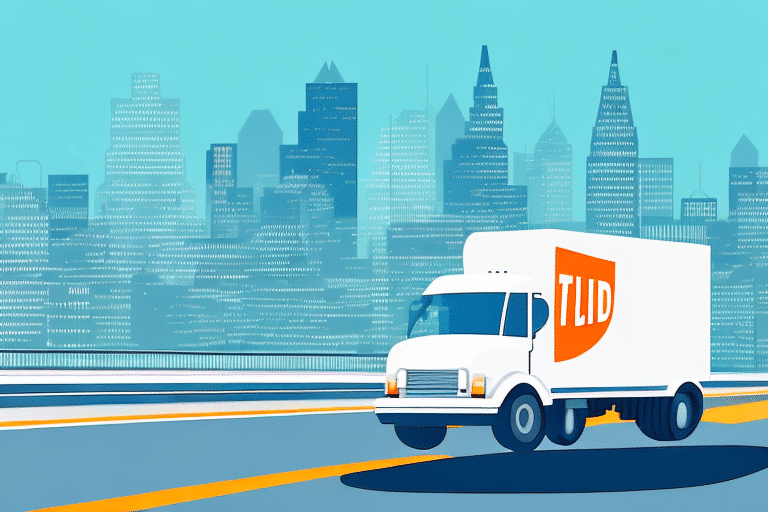Understanding and Importance of First Mile Delivery
First mile delivery refers to the initial step in the shipping process, where goods are transported from a warehouse or distribution center to the last-mile carrier or delivery agent. This phase is critical as it sets the foundation for the entire delivery chain, ensuring that products are picked, packed, and dispatched accurately and efficiently. With the global e-commerce market projected to reach $6.54 trillion by 2023 [1], optimizing first mile delivery has become paramount for businesses aiming to meet increasing customer expectations.
Challenges and Solutions in First Mile Delivery
Key Challenges
- Delivery Time Commitments: Ensuring timely pickup and dispatch to meet delivery deadlines.
- Carrier Integration: Coordinating with multiple carriers and maintaining consistent standards.
- Packaging Standards: Adhering to varying packaging requirements set by different carriers.
- Cost Management: Balancing efficiency with cost-effectiveness to maintain profitability.
Overcoming the Challenges
Businesses can address these challenges by implementing advanced technologies, such as automated sorting systems and real-time tracking mechanisms. Partnering with third-party logistics providers (3PLs) that specialize in first mile delivery can also streamline operations and ensure adherence to industry standards.
Strategies for Streamlining First Mile Delivery Operations
To maximize efficiency in first mile delivery, companies should adopt comprehensive strategies that address various aspects of the process. Here are five effective strategies:
1. Implementing Automation
Automation reduces processing time and minimizes human errors. Technologies like automated sorting systems, barcode scanners, and real-time tracking can significantly enhance parcel flow and operational efficiency [2].
2. Partnering with a 3PL Provider
Collaborating with a reputable 3PL provider grants businesses access to extensive resources and expertise. These providers leverage their relationships with carriers and industry knowledge to optimize first mile delivery processes efficiently.
3. Adopting Best Practices
Establishing lean processes, maintaining effective communication channels with carriers, and setting clear packaging and labeling protocols can significantly reduce inefficiencies. Adhering to industry best practices ensures consistency and reliability in delivery operations.
4. Embracing Technological Solutions
Incorporating technologies such as GPS vehicle tracking, artificial intelligence, and data analytics provides real-time insights into supply chain operations. These tools help identify potential issues, optimize routing, and enhance overall delivery performance [3].
5. Investing in Staff Training
Comprehensive training programs equip staff with the necessary skills to manage first mile delivery processes effectively. Continuous education on technological advancements and problem-solving techniques ensures that employees can adapt to evolving operational demands.
Role of Technology and Data Analytics in First Mile Delivery
Track and Trace Systems
Real-time tracking systems enable businesses to monitor shipments throughout the first mile delivery process. This visibility allows for proactive management of potential delays and ensures transparent communication with customers [4].
Predictive Analytics
Predictive analytics leverages historical data to forecast potential disruptions. By identifying patterns and trends, businesses can implement preventive measures, thereby enhancing delivery reliability and efficiency.
Mobile Technology
Mobile solutions facilitate on-the-go management of delivery operations. Delivery agents can use mobile devices to scan barcodes, log deliveries, update statuses, and communicate with customers in real-time, thereby improving operational agility.
Automated Sorting Systems
Automated sorting systems increase processing speed and accuracy by minimizing manual interventions. These systems can handle high volumes of packages efficiently, reducing labor costs and improving delivery times.
Optimizing Operations: Routing, Scheduling, and Cost Management
Optimal Routing and Scheduling
Effective routing and scheduling ensure that deliveries are planned for maximum efficiency. Utilizing route optimization software can help businesses reduce travel time, minimize fuel consumption, and enhance overall delivery performance.
Cost Optimization Techniques
- Consolidation of Shipments: Combining multiple shipments into a single delivery run can lower transportation costs and reduce environmental impact.
- Integration of Multiple Carriers: Working with various carriers allows businesses to select the most cost-effective and reliable options based on delivery requirements.
- Use of Automation: Automating repetitive tasks can decrease labor costs and increase operational efficiency.
Enhancing Customer Experience and Sustainability
Enhancing Customer Experience
- Providing Real-Time Tracking: Transparency in delivery status keeps customers informed and reduces anxiety related to shipping.
- Ensuring Timely Delivery: Reliable and punctual deliveries enhance customer satisfaction and loyalty.
- Maintaining Product Quality: Proper packaging and handling ensure that products arrive in excellent condition, fostering positive customer experiences.
Sustainability Initiatives
Adopting sustainable practices in first mile delivery not only benefits the environment but also appeals to eco-conscious consumers. Strategies include using electric vehicles, optimizing routes to reduce fuel consumption, and minimizing packaging waste through the use of recyclable materials.
Case Studies: Successful Implementation of First Mile Delivery Strategies by Leading Companies
Amazon
Amazon has revolutionized first mile delivery by investing in a vast network of automated warehouses and employing cutting-edge robotics technology. Their strategic partnerships with various delivery services offer customers multiple delivery options, enhancing flexibility and speed [5].
UPS
UPS utilizes advanced technology to optimize their first mile delivery processes. The UPS Access Point service, for example, allows customers to choose alternative pickup locations, improving convenience and reducing delivery times [6].
DHL
DHL has integrated green initiatives into their first mile delivery operations, employing electric vehicles and bicycles to lower their carbon footprint. Additionally, they focus on reducing packaging waste by promoting the use of recyclable materials [7].
Future Trends and Innovations in First Mile Delivery
Use of Drones and Autonomous Vehicles
The adoption of drones and autonomous vehicles is set to transform first mile delivery by reducing delivery times and operational costs. These technologies also contribute to environmental sustainability by lowering emissions [8].
Increased Reliance on Real-Time Tracking and Predictive Analytics
Advancements in real-time tracking and predictive analytics will play a crucial role in optimizing the first mile delivery process. These technologies provide actionable insights that enhance decision-making and operational efficiency.
Focus on Sustainability
Sustainability will remain a key focus, with businesses striving to implement more eco-friendly delivery methods. Innovations such as electric delivery vehicles, sustainable packaging, and optimized routing will be integral to future first mile delivery strategies.
Best Practices for Managing and Measuring First Mile Delivery Performance
Setting Clear Performance Metrics
Establishing key performance indicators (KPIs) such as on-time delivery rates, customer satisfaction scores, and delivery accuracy rates is essential for monitoring and improving first mile delivery performance. Clear metrics provide a framework for continuous improvement.
Conducting Regular Audits
Regular audits help identify inefficiencies and areas needing improvement. By systematically reviewing processes, businesses can implement corrective measures and enhance overall delivery performance.
Leveraging Technology
Utilizing technology for real-time monitoring and data analytics enables businesses to gain valuable insights into their first mile delivery operations. These tools support informed decision-making and strategic planning.
Collaborative Approaches to Achieving Efficient First Mile Deliveries
Public-Private Partnerships
Collaborating with government entities and other stakeholders can help optimize infrastructure and streamline first mile delivery operations. Public-private partnerships facilitate the development of efficient logistics networks and support sustainable delivery practices.
Community Engagement
Engaging with local communities ensures that delivery operations are aligned with regional needs and sustainability goals. Community-focused initiatives can enhance goodwill and support for delivery services.
Customer Collaboration
Involving customers in the delivery process, such as through customizable delivery options and feedback mechanisms, can improve service quality and customer satisfaction.
Environmental Implications of First Mile Deliveries and Green Initiatives
Reducing Carbon Emissions
First mile delivery contributes to carbon emissions primarily through transportation. Businesses can mitigate this impact by adopting electric vehicles, optimizing delivery routes, and consolidating shipments to reduce the number of trips required.
Minimizing Packaging Waste
Excessive packaging increases waste and environmental strain. Implementing sustainable packaging solutions, such as using recyclable materials and optimizing package sizes, can significantly reduce the environmental footprint of first mile deliveries.
Promoting Energy Efficiency
Enhancing energy efficiency through the use of alternative fuels and energy-efficient technologies helps lower the environmental impact of delivery operations. Energy-efficient practices also contribute to long-term cost savings and sustainability.
Conclusion
Optimizing first mile delivery is essential for the success of e-commerce and logistics businesses. By addressing key challenges, implementing effective strategies, leveraging advanced technologies, and adopting sustainable practices, companies can enhance operational efficiency, reduce costs, and improve customer satisfaction. As the industry continues to evolve, staying ahead with innovative solutions and collaborative approaches will be crucial for maintaining a competitive edge in the market.
Sources:






















